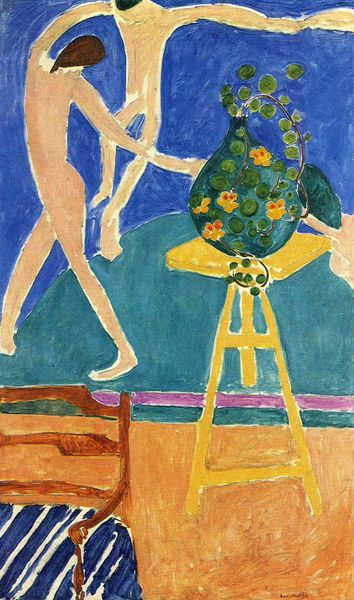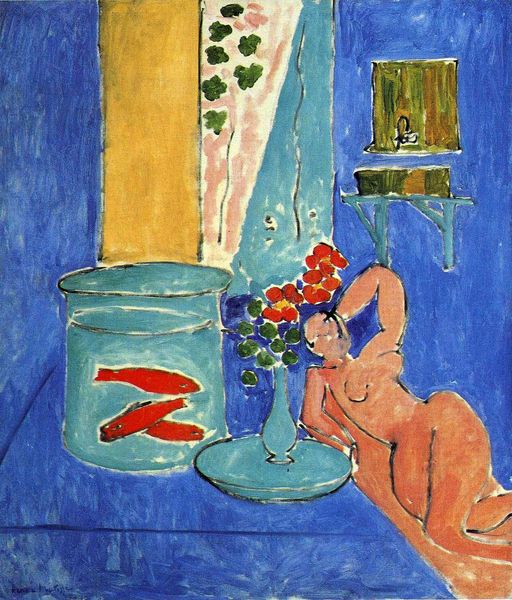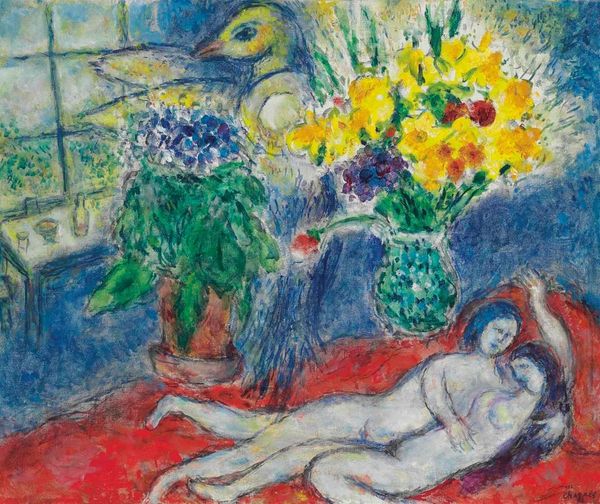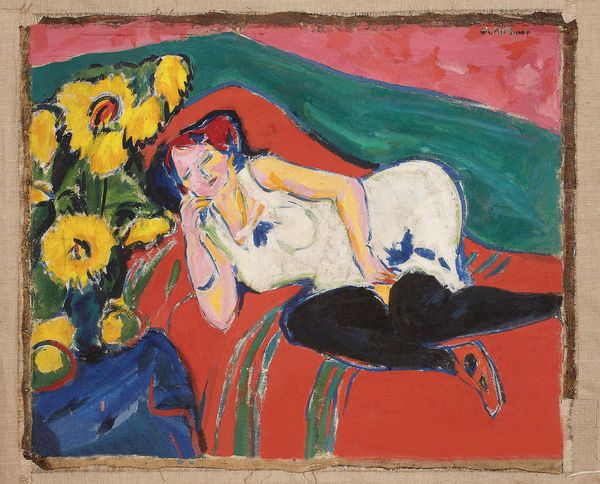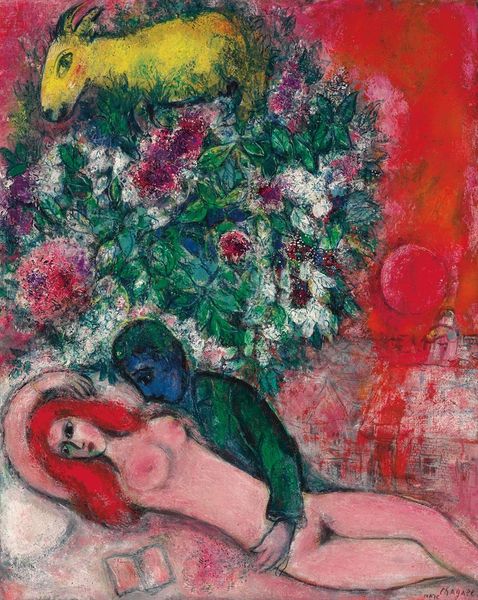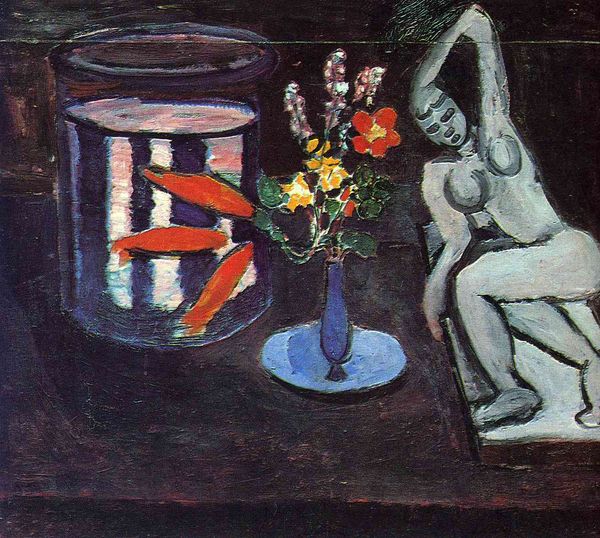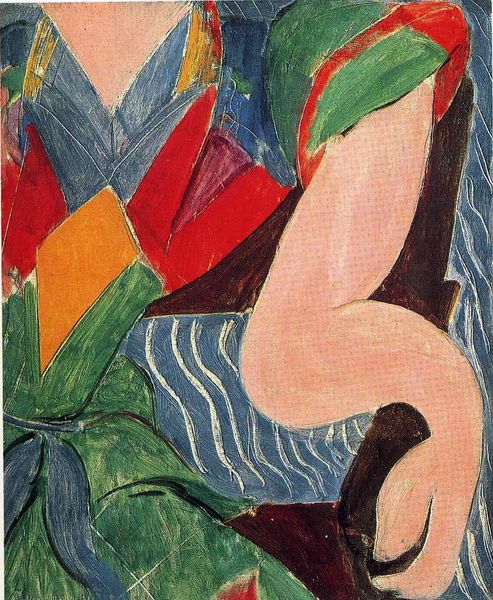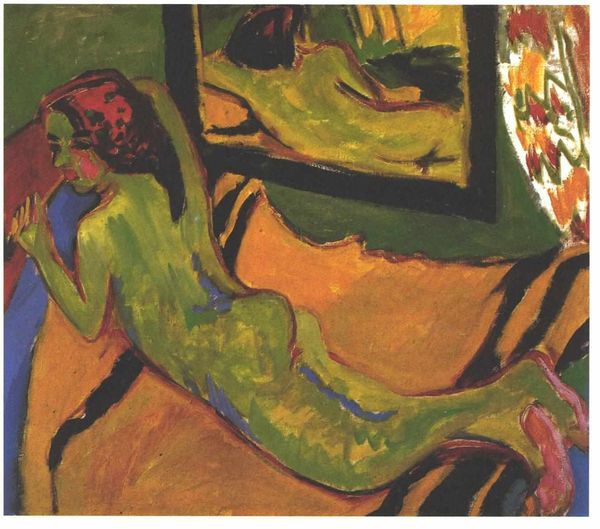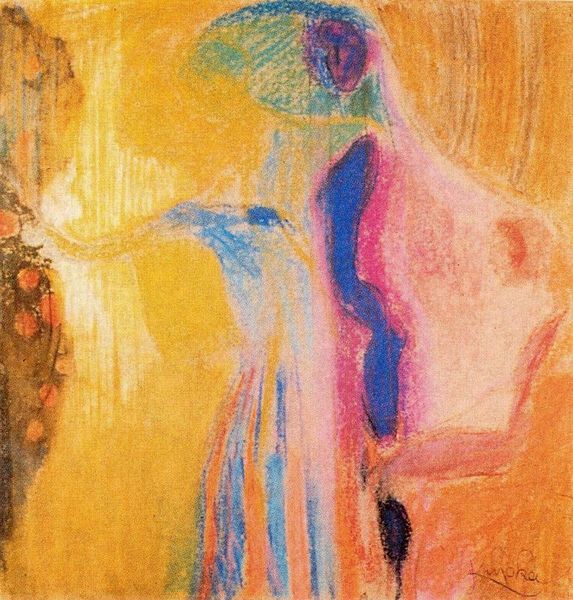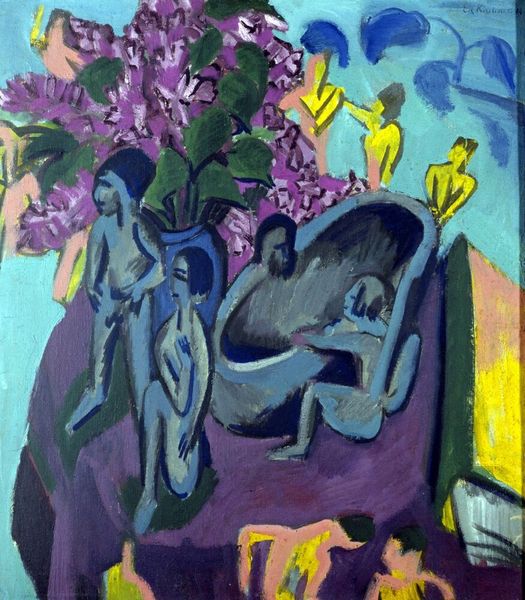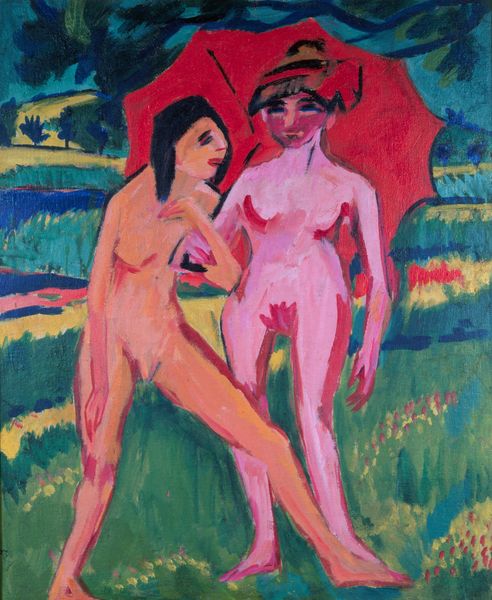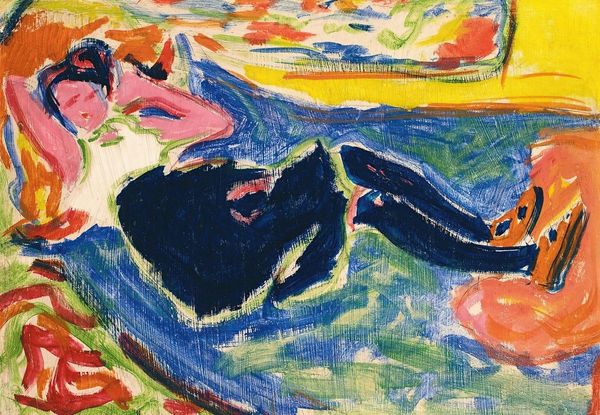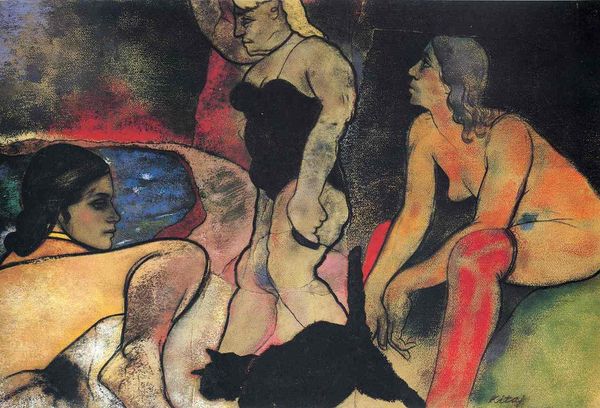
Dimensions: 109.5 x 114 cm
Copyright: Public domain US
Curator: Good morning. We’re standing before Henri Matisse's "Nasturtiums with ‘The Dance’ (II)," painted in 1912. The canvas showcases his distinctive use of color and form, particularly juxtaposing the still life of flowers with a background reminiscent of his earlier masterpiece, "The Dance". Editor: The first thing that strikes me is how Matisse merges background and foreground. The figures feel almost like wallpaper, their energy contained yet bursting to escape the two-dimensional space. The deep blue really amplifies the orange of the dancers. Curator: Precisely. And that dynamic is central to understanding Matisse’s place within the Fauvist movement. He uses intense, non-naturalistic colors not to replicate reality but to evoke emotions. The dance itself, reproduced in the background, was a commissioned piece representing joy and communal harmony. Editor: Thinking about those dancing figures, it's impossible not to see echoes of classical bacchanals. Though simplified, those figures still radiate a sense of liberation and primal energy, particularly against the domestic setting created by the flowers and furniture. Curator: Absolutely. The positioning of the vase of nasturtiums also demands consideration. Nasturtiums, though vibrant and decorative, are quite commonplace. Pairing them with a monumental subject elevates the ordinary. Moreover, by juxtaposing a still life with a portion of his renowned earlier artwork, "The Dance", Matisse boldly examines relationships between different genres. Editor: It makes you consider how public and private narratives intertwine. “The Dance,” as a piece intended for public consumption, meets the quiet contemplation of a domestic space. Curator: Indeed. This particular composition offers insight into the complexities of human existence by juxtaposing notions like creation and re-creation, spontaneity, containment, public and private, all within the confines of a single work. Editor: After a second look, this work feels very personal; I believe that by combining two art pieces, he captures time and creates another dialogue for the spectator. Curator: Well, this piece truly underscores Matisse’s vision to convey human experience. I am more convinced now that its bold expression remains significant.
Comments
No comments
Be the first to comment and join the conversation on the ultimate creative platform.
